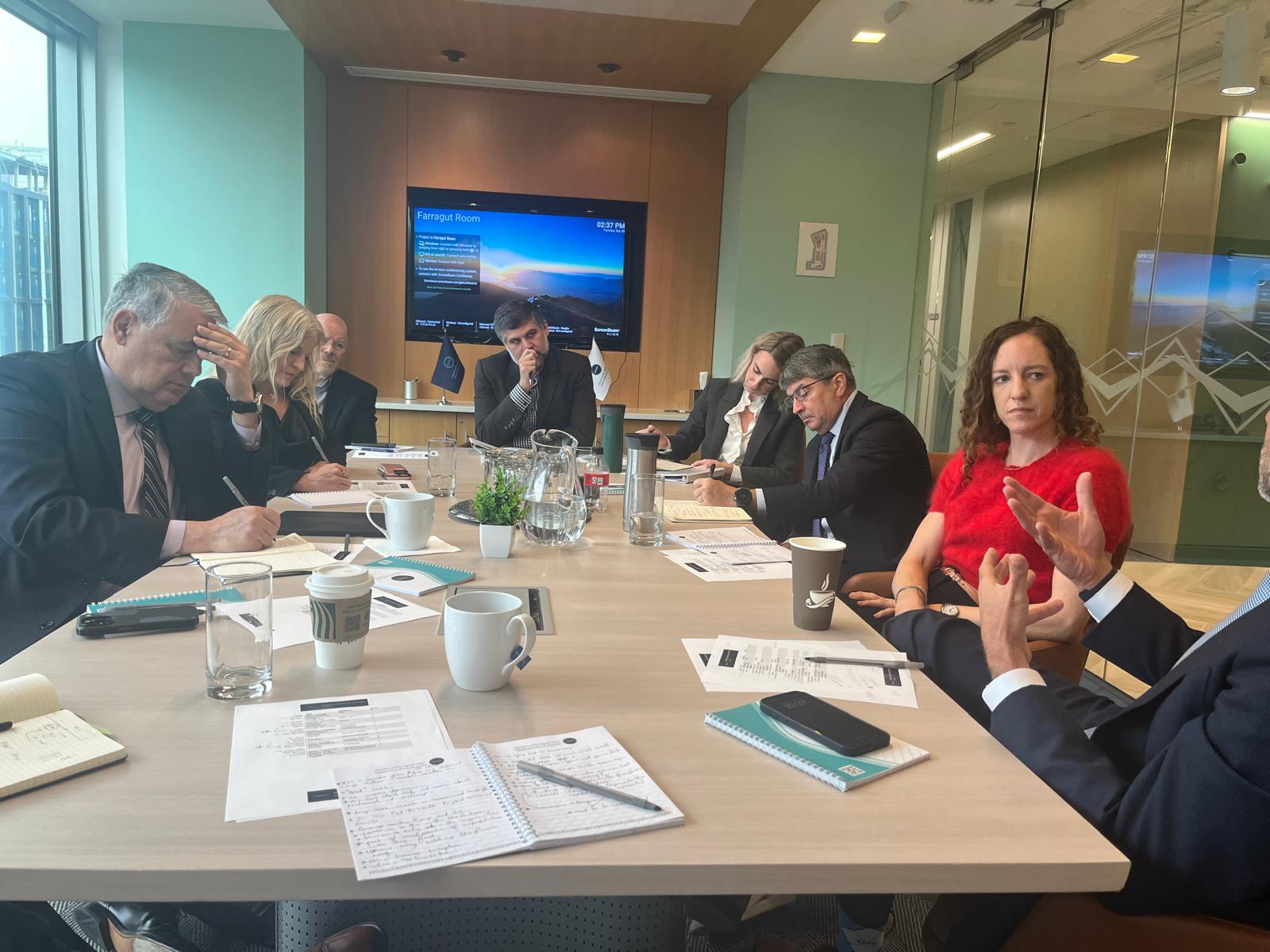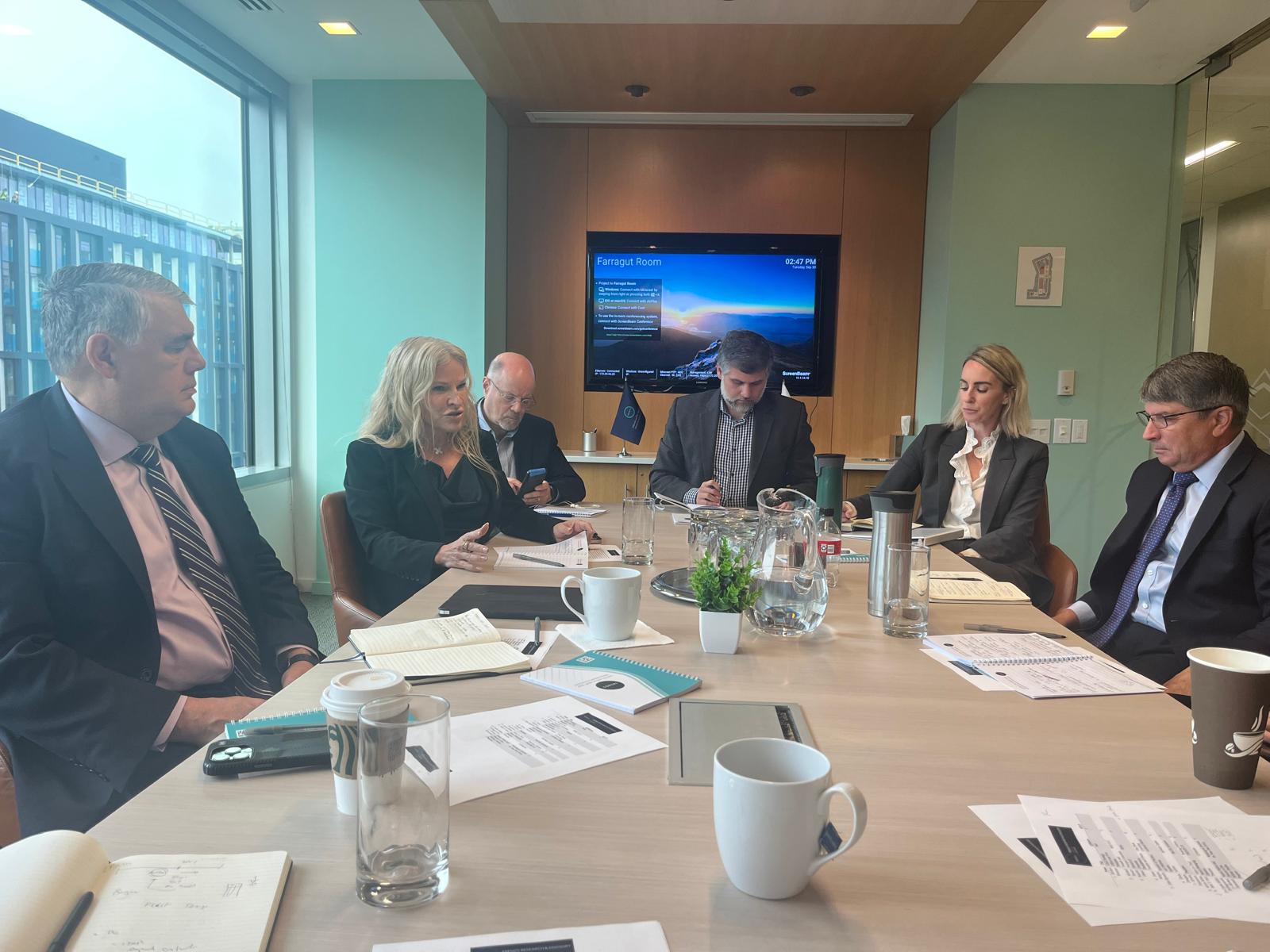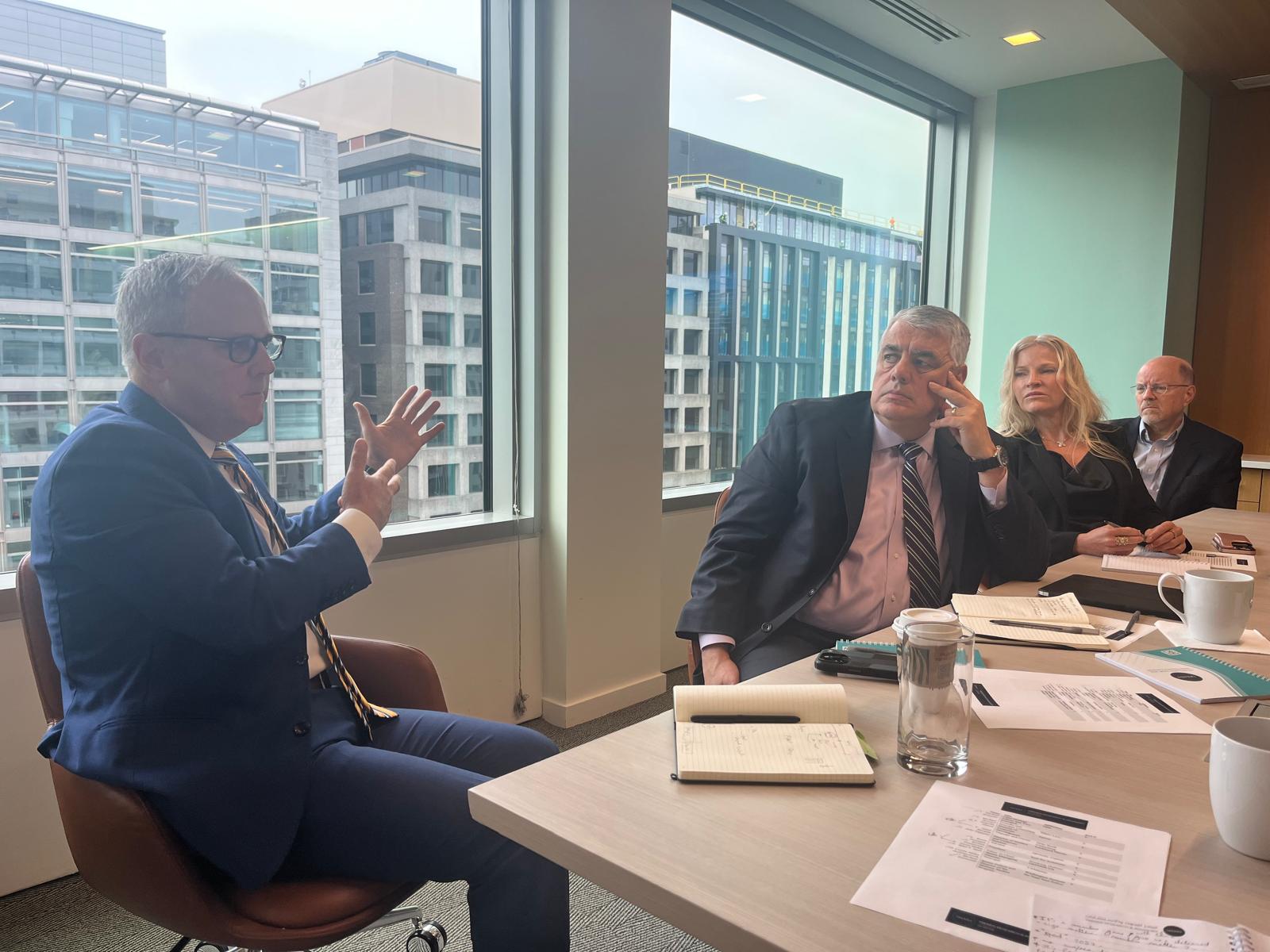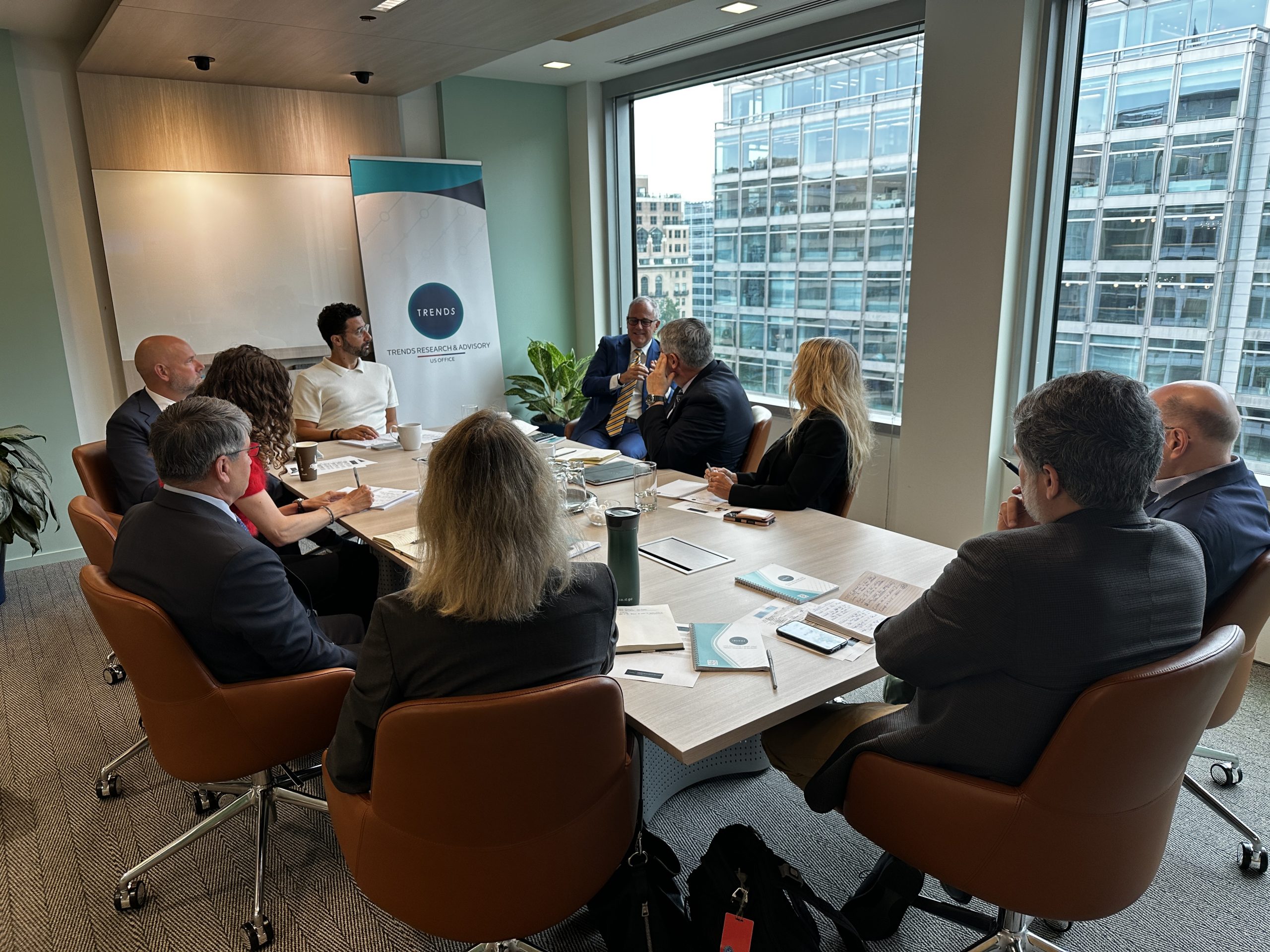TRENDS Research & Advisory’s United States Office (TRENDS US) held its third strategic session — Unmanned Surface Vessels: The Future of Maritime Security — in Washington, D.C., featuring a distinguished panel of former military leaders and defense and maritime technology experts.
Participants emphasized that 21st-century maritime deterrence is no longer determined by fleet size alone but by numbers, speed, and innovative deployment capabilities. They highlighted that unmanned technologies have become a cornerstone for securing maritime routes and countering rising threats.

Transformations in Maritime Security Concepts
The session was moderated by Bilal Y. Saab, Senior Managing Director of TRENDS America, and addressed three main themes: the impact of unmanned surface and underwater vehicles (USVs and AUVs) on maritime security in the Gulf and other elsewhere; the prospects of these advanced capabilities and their role in strengthening deterrence; and the strategic importance of international and regional cooperation in developing and employing these technologies.
Panelists included Michael Brasseur, Chief Strategy Officer and Vice President at Saab, and former founder and commodore of the US Navy’s Task Force 59; Michael Stewart, Founder and Principal Consultant of N86U LLC, and former director of the Disruptive Capabilities Office in the US Navy. Also participating was Admiral Kevin Donegan, Senior Advisor to TRENDS US and former Commander of U.S. Naval Forces Central Command (NAVCENT), the Fifth Fleet, and Combined Maritime Forces in Bahrain, alongside retired senior officers, defense industry experts, and representatives of emerging maritime technology startups.

Redefining Maritime Deterrence
Speakers agreed that escalating maritime challenges — including piracy, smuggling, terrorism, and threats from Iranian and Houthis forces — require new approaches to deterrence built around innovative systems and unmanned vessels to enhance surveillance and rapid response capabilities.
Experts noted that many U.S. partner states in the Gulf face limited Maritime Domain Awareness (MDA) and lack sufficient means to secure their maritime resources. Therefore, unmanned systems act as a “technological equalizer,” providing effective, lower-cost, and more flexible capabilities.
The session highlighted the success of Task Force 59, founded by Admiral Brasseur. This initiative integrates unmanned systems and artificial intelligence into Fifth Fleet operations and has demonstrated that unmanned systems deliver significant impact at minimal cost.
The discussion also covered Ukraine’s experience in the Black Sea, where drones and unmanned vessels challenged the Russian fleet, marking a transformative shift in naval warfare tactics. Panelists stressed that such technologies complement rather than replace major warships, amplifying their effectiveness and reach.

Future Challenges
Despite the rapid progress in unmanned maritime technologies, participants identified regulatory and financial barriers as significant obstacles to further development. They noted that U.S. defense bureaucracy often slows innovation adoption, even with establishing entities such as the Defense Innovation Unit (DIU). Speakers underscored the need for institutional support mechanisms and sustainable funding for testing and development initiatives. They also warned that the absence of institutional memory leads to the loss of valuable lessons when leadership changes or individual initiatives end.

International Cooperation: A Foundation for Maritime Leadership
Panelists agreed that international collaboration and partnerships are essential for developing and deploying unmanned systems. Successful experiences in the Gulf and Ukraine demonstrate the value of knowledge exchange among naval forces, tech companies, and young innovators. Such partnerships enable real-world system testing, integration of AI into joint operations, and building trust between humans and machines within complex monitoring and defense networks.
TRENDS: A Platform for Foresight
The session concluded with recommendations calling for greater investment in maritime innovation, expanding international partnerships, and adopting more flexible funding frameworks to accelerate the integration of emerging technologies into global maritime security systems.
TRENDS Research & Advisory – America reaffirmed its commitment to continuing to organize strategic intellectual sessions that bring together decision-makers, experts, and practitioners to exchange perspectives on global maritime security and future defense technologies. This effort aligns with TRENDS’ mission to advance scientific understanding and forward-looking analysis of pressing international issues.



